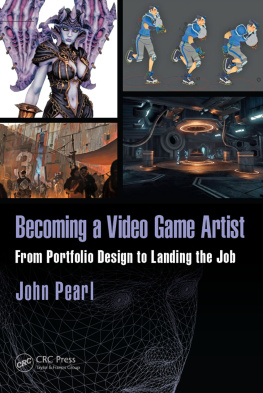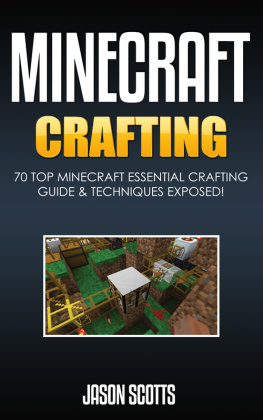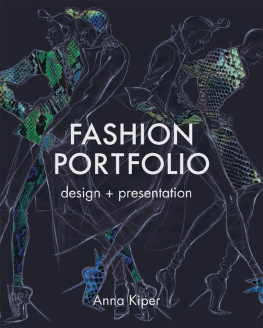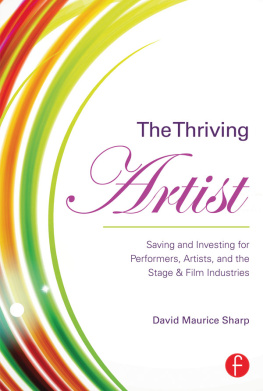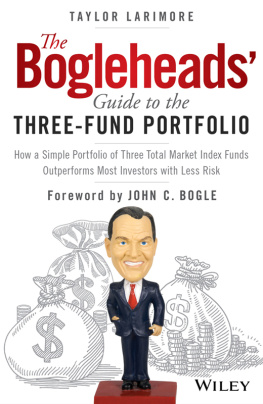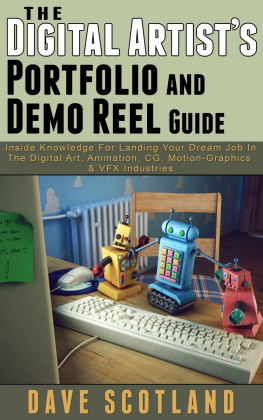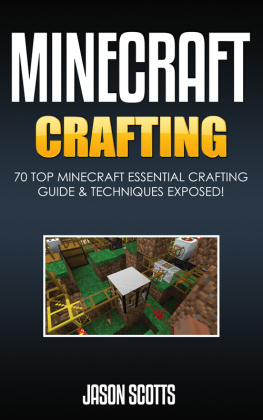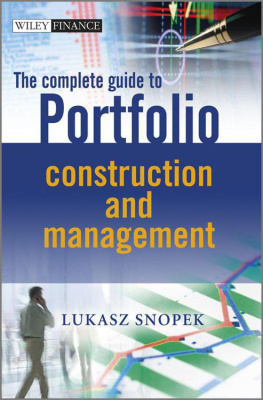Contents

Becoming a Video Game Artist
From Portfolio Design to Landing the Job
Becoming a Video Game Artist
From Portfolio Design to Landing the Job
John Pearl

CRC Press
Taylor & Francis Group
6000 Broken Sound Parkway NW, Suite 300
Boca Raton, FL 33487-2742
2017 by Taylor & Francis Group, LLC
CRC Press is an imprint of Taylor & Francis Group, an Informa business
No claim to original U.S. Government works
Printed on acid-free paper
Version Date: 20160622
International Standard Book Number-13: 978-1-138-82493-5 (Paperback)
This book contains information obtained from authentic and highly regarded sources. Reasonable efforts have been made to publish reliable data and information, but the author and publisher cannot assume responsibility for the validity of all materials or the consequences of their use. The authors and publishers have attempted to trace the copyright holders of all material reproduced in this publication and apologize to copyright holders if permission to publish in this form has not been obtained. If any copyright material has not been acknowledged please write and let us know so we may rectify in any future reprint.
Except as permitted under U.S. Copyright Law, no part of this book may be reprinted, reproduced, transmitted, or utilized in any form by any electronic, mechanical, or other means, now known or hereafter invented, including photocopying, microfilming, and recording, or in any information storage or retrieval system, without written permission from the publishers.
For permission to photocopy or use material electronically from this work, please access www.copyright.com (http://www.copyright.com/) or contact the Copyright Clearance Center, Inc. (CCC), 222 Rosewood Drive, Danvers, MA 01923, 978-750-8400. CCC is a not-for-profit organization that provides licenses and registration for a variety of users. For organizations that have been granted a photocopy license by the CCC, a separate system of payment has been arranged.
Trademark Notice: Product or corporate names may be trademarks or registered trademarks, and are used only for identification and explanation without intent to infringe.
Library of Congress Cataloging-in-Publication Data
Names: Pearl, John, author.
Title: Becoming a video game artist : from portfolio design to landing the job / John Pearl.
Description: Boca Raton : Taylor & Francis, a CRC title, part of the Taylor & Francis imprint, a member of the Taylor & Francis Group, the academic division of T&F Informa, plc, [2017]
Identifiers: LCCN 2016024612 | ISBN 9781138824935 (alk. paper)
Subjects: LCSH: Computer art--Vocational guidance. | Art portfolios. | Video games industry--Vocational guidance.
Classification: LCC N7433.8 .P42 2017 | DDC 776--dc23
LC record available at https://lccn.loc.gov/2016024612
Visit the Taylor & Francis Web site at
http://www.taylorandfrancis.com
and the CRC Press Web site at
http://www.crcpress.com
For Leah and Drake
Contents
There are more game companies than ever before, but there are also more individuals vying for game jobs than ever. An individual looking to break into the industry needs to set him/herself apart in any way they can from their competition. Ive worked in the game industry for 17 years as of writing this book. In that time Ive worked on more than a dozen games, held many different titles, and had the opportunity to review what feels like several thousand portfolios. After reviewing that many portfolios, you begin to see the same issues with content and presentation over and over again. With so many game schools, and online resources offering training for a career in games, it seems like these issues wouldnt be so prevalent. I wondered how I could still see the same mistakes in portfolios today that I made when I started out more than a decade and a half ago.
After looking around, I found that there wasnt a lot of resources about preparing a great portfolio and there were even less about the responsibilities of the actual positions within the video game field. How can people prepare a relevant portfolio if they dont understand the responsibilities of the job theyre applying for? These are the things that drove me to write this book.
I knew I couldnt write this book alone or, if I did, it might come across as a single voice. While Ive had the opportunity to work in many different art positions, Im not an expert in all of them. I wanted this book to be as well rounded and as informative as possible. To accomplish this, I contacted some of the most seasoned talent across lots of different jobs that Ive met during my career and some people Ive never met in person to ask them to contribute to this project. Their answers and advice were better than I couldve hoped for. This book is really a testament of the community within the games industry of people who want to see others succeed.
I would like to thank all the amazing people who contributed to this book. Without their perspectives and insight, this book wouldnt have been possible. Their personal experiences and advice are invaluable. I would also like to thank Reinhard Pollice of Nordic Games and David Adams of Gunfire Games for allowing me to use images from their games in this book. Additionally, Id also like to thank Christopher J. Anderson, Ryan Gitter, and Melissa Smith for allowing me to use their personal work throughout this book.
For encouragement, support, and love, I thank my wonderful wife, Leah Pearl, and our son, Drake Sagan Pearl. Without their support, this book wouldnt have been a reality.

John Pearl, Design Director/Principal Artist, Gunfire Games . Over the past 17 years, John has worked in the role of character artist, environment artist, lead environment artist, principal artist, environmental art director, character art director, and technical art director. While in those positions, hes worked a number of different styles and genres of games. The most notable to date was the Darksiders Franchise including the recent Darksiders II: Deathinitive Edition. He is one of the founders of Gunfire Games where they recently shipped Chronos for the Oculus Rift.
Christopher J. Anderson, Senior Concept Artist, BioWare . Christopher J. Anderson has worked as a concept artist in the game industry for 14 years. He has worked for a number of different high-profile companies, including Mythic Entertainment, NCSoft, Tencent, Turbine, and BioWare Austin. During that time, he has worked as a senior and a lead on numerous projects that varied greatly in both style and scope. (http://chrisjandersonlatest.blogspot.com/)
Jay Bakke, Senior Visual Effects Artist, Bungie, Inc . In his 9 years of working experience in the video game industry, Jay Bakke has worked on several titles, including Destiny, God of War: Ascension, Dungeon Siege 3, and Neverwinter Nights 2. Jay is currently working at Bungie as a senior visual effects artist. Although most of his career has revolved around visual effects, his thirst to tackle complex tasks has led him to wear several other hats including animation, rigging, and tech art lighting. Prior to game development, Jay got his Bachelors in Animation at the Art Institute of Minneapolis. He then spent 3 years working as a 3d animator in the medical animation field, focused primarily on musculo-skeletal work for the spinal surgery industry. Outside of game development, Jay enjoys cycling, hiking, and rebuilding classic cars.

